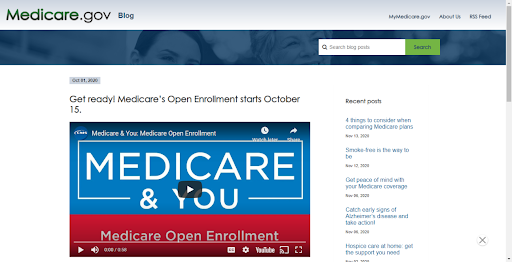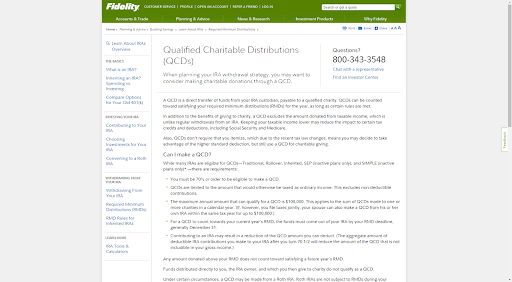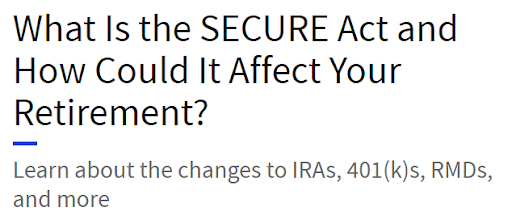
How NOT to Run Out of Money in Retirement
The end of the year is fast approaching. As the calendar days march toward 2021, let’s keep in mind that there are several ideas we should review as you work to get your year-end financial house in order.
While procrastination is tempting, remember how checking items off our ‘to-do’ list always gives us a sense of accomplishment.
Before we get started, the tips below are simply guidelines. Feel free to check with your tax advisor, as various nuances can crop up. As always, we would be happy to assist you.
1. Health care open enrollment has begun.
If you obtain your health insurance through the Health Insurance Marketplace, now is the time to purchase your health insurance for 2021.
https://www.healthcare.gov/quick-guide/dates-and-deadlines/
This is the one time of year you can change your health insurance coverage or enroll. If you don’t act by December 15, you will miss out on coverage for 2021 unless you qualify for a special enrollment period. Plans sold during open enrollment start January 1, 2021.
2. Medicare open enrollment 2020.
You can sign up for Medicare health and drug plans between October 15 and December 7.
https://www.medicare.gov/blog/medicare-open-enrollment-get-ready
Decide if your coverage will meet your needs during 2021. If you like what you had this year and it is still available next year, you won’t need to take any action.
3. Did you max out your retirement accounts?
You can put up to $6,000 into an IRA in tax year 2020; $7,000 if you are 50 or older. You will have until Tax Day to make a 2020 tax-year contribution. The sooner you contribute, the longer your assets can grow tax-deferred.
Contributions to your 401(k) are automatically deducted from each paycheck. Contributions for tax year 2020 must be made by the end of the year to count against 2020 income.
The 401(k) contribution limit]] is $19,500 for 2020 and the catch-up limit is $6,500.
Your employer or plan administrator will let you know if you can adjust changes to your contribution this year. As we have said in the past, we strongly suggest that you contribute the minimum amount necessary to receive your entire employer’s match. It’s free money. Don’t leave free money on the table.
4. This year’s RMD wrinkle.
If you are 72 (or turned 70½ before January 1, 2020), you are obligated to take a required minimum distribution (RMD) from your IRA. But this year is an exception.
Thanks to the CARES Act, the RMD is waived in 2020.
ThisRMD waiver applies to everyone with a 401(k), IRA, 403(b) or 457(b) account.
https://www.ameriprise.com/research-market-insights/market-volatility/cares-act-waives-rmd-2020
Owners of inherited IRAs may suspend RMDs for 2020, too.
If you took an RMD between January 1 and August 31, you were eligible to roll the funds back into your retirement account up until the August 31 deadline.
https://www.schwab.com/resource-center/insights/content/can-you-forgo-taking-rmds-2020
5. If you are over 70½, you may be eligible to transfer up to $100,000 from your IRA to a charity without paying taxes on the distribution.
This is called a qualified charitable distribution or QCD. Moreover, a QCD satisfies the RMD requirement as long as certain rules are met.
https://www.fidelity.com/building-savings/learn-about-iras/required-minimum-distributions/qcds
Despite all the tax changes, QCDs are a great tax break for those who are charitably inclined. Even though the age for RMDs is now age 72, IRA owners at least age 70 ½ can transfer money directly to charity from their IRA in 2020. Just make sure the QCD is received or a check is cashed by the charity by year end.
6. Let’s consider “harvesting” tax losses.
Do you own stocks, exchanged-traded funds, or mutual funds that are below the purchase price? If so, you may sell by the end of the year and offset up to $3,000 in ordinary income or capital gains.
However, please be aware of the ‘wash sale’ rule and treatment of long-term and short-term losses. The rule defines a wash sale as one that occurs when an investor sells a security at a loss and, within 30 days before or after the sale, buys a “substantially identical” stock or security. If so, the IRS disallows the loss.
https://www.investopedia.com/terms/w/washsalerule.asp
Short-term capital gains occur when an asset that is sold was held for one year or less. Short-term capital gains are taxed as ordinary income. Long-term gains are taxes at a more favorable rate.
7. Consider converting your traditional IRA to a Roth IRA.
Depending on the outcome of the election, tax rates may rise next year. Therefore, converting a traditional IRA into a Roth IRA this year would require taxes to be paid at 2020’s rate, but it would enable the account holder to withdraw funds without paying federal taxes at retirement.
Also, due to COVID-19 this year, your 2020 taxable income may be lower than usual due to work reduction and restrictions.
Additionally, if you waived your RMD this year should consider converting your RMD amount. This is a one-time opportunity since RMDs in a normal year cannot be converted. Just be sure that all conversions are completed by December 31 to qualify for 2020.
Whether or not tax rates rise next year, a Roth IRA is an excellent retirement vehicle.
8. SECURE Act’s Impact on Beneficiary Planning
Historically, beneficiaries of IRAs and employer-sponsored plans fell into two broad categories: Designated Beneficiaries and Non-Designated Beneficiaries. In general, the Designated Beneficiaries are actual people who are alive when you die. The Non-Designated Beneficiaries are charities, trusts and your estate.
In 2019 the SECURE Act changed these two groups of beneficiaries. The pre-2019 group of Designated Beneficiaries was split into two sub-groups of its own. Eligible Designated Beneficiaries and Non-Eligible Designated Beneficiaries who are NOT Eligible Designed Beneficiaries.
Eligible Designated Beneficiary
In order to be an Eligible Designated Beneficiary, a beneficiary must be one of the following:
- Your spouse
- Disabled (as defined by the tax code)
- Chronically ill (as defined by the tax code)
- Not more than 10 years younger than you
- Your minor children
The Eligible Designated Beneficiary will receive the most favorable tax treatment. In short, they are able to take advantage of something called the “stretch IRA”. Why is this so benefical?
This allows the beneficiary to take only minimum distributions over their IRS provided life expectancy. This will allow a minimization of taxes by lowering the amount of income they have to add to their tax return. Secondly, by taking a minimum distribution required each year, the beneficiary keeps the maximum amount inside their inherited IRA account allowing it to continue to grow tax-deferred.
Non-Eligible Beneficiary
The Non-Eligible Beneficiary – any living person such as adult children or grandchildren or a trust that does not qualify for an Eligible Designated Beneficiary. These beneficiaries must distribute inherited IRA assets using the SECURE Act’s new 10-year rule.
Under this 10-year rule, the entire inherited retirement account must be emptied by the end of the 10th calendar year of inheritance. During the 10 years however, there are no distribution requirements. The beneficiaries will have flexibility when it comes to timing the distributions for maximum tax efficiency. Figuring out when to take such distributions is something your tax and financial advisors can help with.
Non-Designated Beneficiaries
Non-Designated Beneficiaries generally will receive the least favorable tax treatment. These beneficiaries include charities, your estate and trusts.
When an IRA owner’s death occurs before the Required beginning date (generally April 1st following the year they turn age 72), these beneficiaries must distribute everything from the inherited IRA (or Roth IRA) account by the end of the 5th calendar year. Thus leaving the inherited IRA owners left to only a handful of years over which to spread distributions.
Be sure you understand the implications of your financial planning on your beneficiaries. With a few adjustments you may be able to minimize taxes and give more to those you love.
Are you struggling with what you have so you don't run out of money in retirement?
We have created a FREE report with 10 Steps to Better Your Retirement. Click the button below to receive it.




